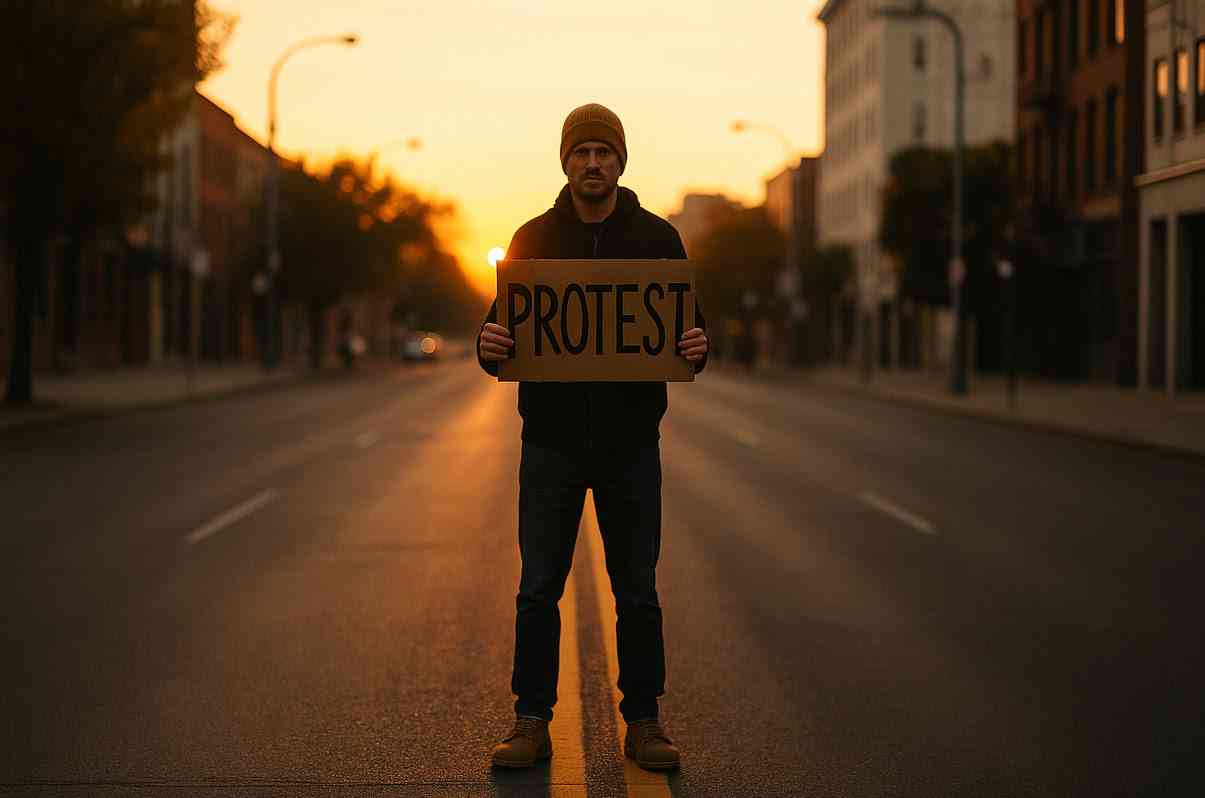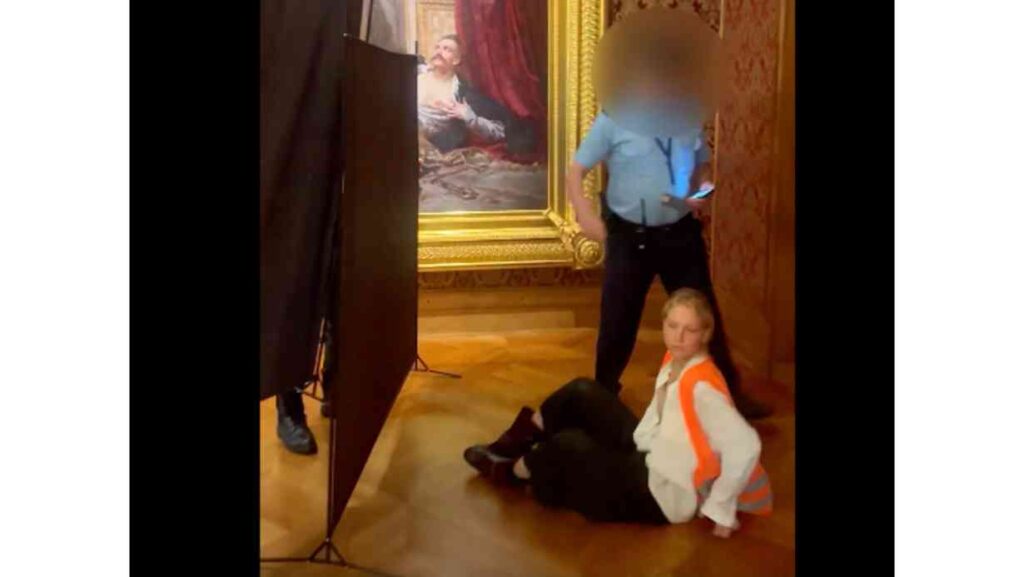Truth & Goodness
4,000 Space Mirrors Could Light Up Earth. Is It Day or Disaster?
04 December 2025

In every country and every political system, there comes a moment when citizens say: enough. A social, professional, or national group takes to the streets. Sometimes they are united by a common idea, sometimes by a feeling of disappointment or harm. But how far can one go — how to protest effectively? When is a protest a rightful fight for rights, and when does it become a reprehensible incident, a crime, or even an atrocity?
In September we witnessed a protest by a young activist from the Last Generation who, standing beneath Jan Matejko’s painting Rejtan – The Fall of Poland, tore open her shirt across her chest and delivered an ideological manifesto in which ecological issues intertwined with political ones.
And what is the Last Generation? It is an exceptionally irritating, international band of troublemakers who became known for blocking roads, gluing themselves to asphalt on carriageways, or blocking airport runways. They drove not the ruling class — which couldn’t care less about their protests — but ordinary citizens into a fury, preventing them from taking children to school, seeing a doctor, or generally forcing them to waste many hours in traffic jams. At one point they also faced considerable — though fully understandable — aggression. Desperate victims of their protests not only showered them with insults, but dragged them away by force, or even sprayed them with pepper spray.
Worse still, various left-wing activists did not stop at driving motorists and travelers mad; in the name of their deranged ideas they began to wreck museums and destroy works of art. Thus the Last Generation in Poland vandalized the historic gate of the Gdańsk Shipyard and damaged the Warsaw Mermaid.
What was interesting and telling was that in Poland the Last Generation never attacked those in power, even though their demands were directed solely at them. They never blocked MPs’ offices or ministries — they only made life difficult for ordinary people. This is less surprising if we consider that a large part of this left-wing milieu was, directly or indirectly, financed by those who govern today.

In the case of the “Rejtan protest,” however, the Last Generation activist deserves congratulations. First, her demonstration didn’t harm anyone, and the protester herself neither obstructed anyone nor destroyed anything. In addition, she rather politely opened her shirt in such an incomplete way that she could not even be accused of public indecency.
In this she differed, for example, from the once-famous group “Femen,” whose activists we knew for always protesting naked or half-naked, very often with slogans painted across their bare breasts. These protests were very loud and readily shown in the media (after all, as the saying goes: “what sells better than a naked boob?”), but today, years later, hardly anyone knows what “Femen” actually fought for, while everyone remembers only that the activists undressed. Meanwhile, these were often socially important issues connected with the fight against harassment and workplace bullying.
But returning to our “Rejtan woman,” it should be noted that her protest was intelligent: it was not only a postmodern game with the work of our Master, but also conveyed a self-ironic message saying: “Here I am from the Last Generation, here I stand before a work of art, and I am not destroying it at all.”
Unfortunately, in this protest the “Femen curse” made itself heard once again, and on social media many people, instead of discussing the manifesto delivered, discussed whether they liked (or did not like) the young activist’s breasts.
You might like to read: The Price of Naive Hospitality? Fear on the Streets, Says a Fantasy Author
Public protests are one of the manifestations of democracy and fully deserve protection, provided that no crimes are committed during them, especially those that would threaten the security of the state or the safety of citizens. Such conditions are certainly met by the blocking of roads, runways, and railway tracks — which does not mean that in particularly dramatic situations similar methods should never be used.
All the more so because it is very difficult to mobilize a group of several or a dozen thousand people (for a demonstration to be visible), yet very easy for a dozen protesters to block a highway or a rail hub and thus land on the front pages of the media. And that, of course, means automatic amplification of demands and postulates.
In Poland we have seen all sorts of forms of protest, from sit-ins at workplaces through street demonstrations (combined, for example, with burning tires in the streets), blocking roads and tracks, to occupations of MPs’ offices or even the Sejm. A specific form of protest was the so-called “Italian strike,” consisting in employees carrying out their duties with such painstaking thoroughness that, in effect, the entire company or institution became paralyzed.
Sometimes demonstrations were conducted so cleverly as to give the police no opportunity to intervene — for example by walking continuously across pedestrian crossings for several hours, or by driving particularly slowly in a convoy of protesting motorists. I was particularly taken with protests in defense of animals, in which pro-animal activists (but also publicly known figures) locked themselves in cages or doused themselves with red paint in prominent spots around the city.
This was to make observers realize how many animal sufferings we are the perpetrators of as a human civilization and to prompt reflection on what we can do to improve the lot of our “lesser brothers.”
Worth reading: Blood, Fans and Money: The True Face of Football, According to a Famous Polish Writer
Compared with Western countries, where protests turn into days-long street battles with hundreds of cars destroyed, hundreds of shops devastated and looted, and hundreds of injured police officers and demonstrators, it must be said that in Poland protests have always proceeded much more calmly — even during Donald Tusk’s first government, when police provocations were staged deliberately and cynically to inflame the conflict.
What is important, in Poland demonstrations do not become a pretext for mass looting or ethnic brawls, which in Western countries crowded with immigrants has happened — and keeps happening — routinely.
I believe that in organizing protests the most important thing is to make sure the blade strikes true. If you rebel against those in power and their decisions, make life difficult for MPs, officials, and ministers, not for ordinary, blameless people. A minister won’t care that your protest complicated the lives of a hundred thousand people. But if you pour slurry on his driveway at his own villa, he and his colleagues in government will certainly be more inclined to look at your postulates. That, in short, is how to protest effectively.
Read the original article: Nagość i wielkie idee. Jak skutecznie protestować